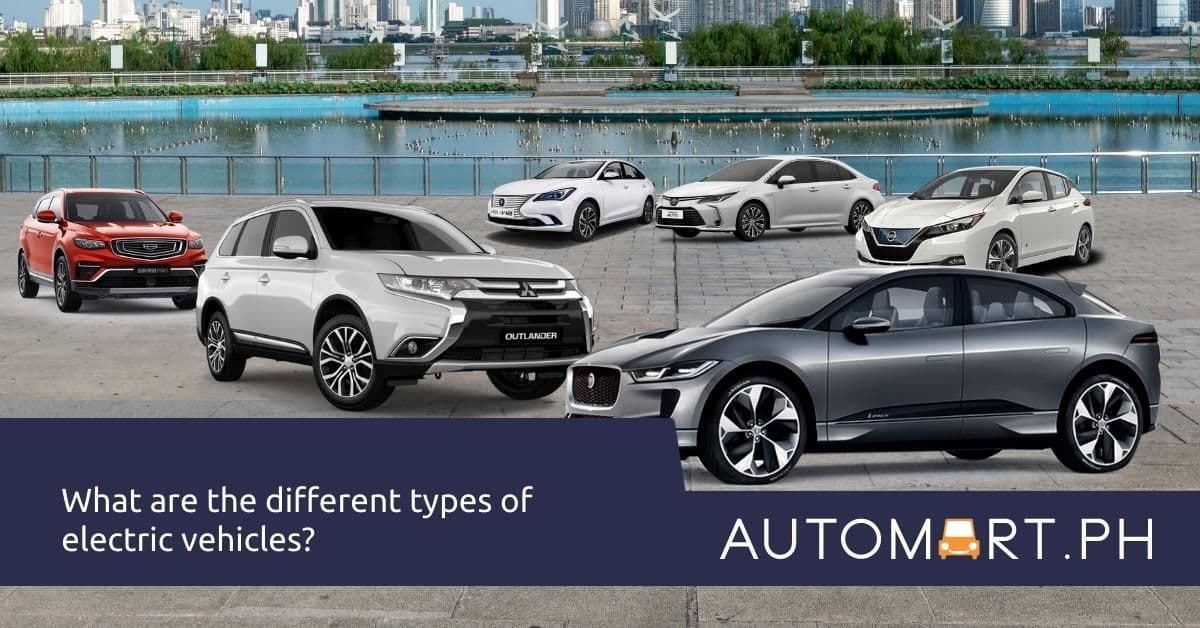
What are the different types of Electric Vehicles?
Updated on December 18 2025
What are the different types of Electric Vehicles?
By: Zeke A. Pelaez, for Automart.ph
On Philippine roads today, electric vehicles are significantly more common than a few years ago. As fuel prices skyrocket worldwide, and roads get more congested, it is highly ideal to get an efficient electric vehicle (EV). There are different types of EVs, of which include multiple variations for each.
Geely Azkarra Luxury
Hybrid Electric Vehicle (HEV)
A hybrid electric vehicle uses a conventional internal combustion engine (ICE) as its main power source with assistance from a battery pack. In a traditional ICE vehicle, energy is lost from the car’s brakes through heat. With an HEV on the other hand, the battery charges through regenerative braking, turning kinetic energy back into electrical energy. This energy can later on be used to power the vehicle in situations wherein the ICE is deemed inefficient such as during stop and go traffic idling.
Toyota Corolla Altis Hybrid
HEVs are almost the same as driving regular ICE vehicles, wherein the driver can top up with fuel and do not have to worry about charging the vehicle. A few examples of HEVs are Geely’s Azkarra and Okavango, Toyota’s Corolla Altis Hybrid and Corolla Cross Hybrid, and the Mazda 3 Hybrid.
Mitsubishi Outlander PHEV
Plug-in Hybrid Electric Vehicle (PHEV)
Plug-in Hybrids have a similar concept as HEVs, where the vehicle uses an ICE and a battery pack. Like HEVs, its battery can also be charged through regenerative braking, however, there are a few key differences. Unlike HEVs, most PHEVs use batteries that are larger and more powerful than the former, as these vehicles can be driven purely in electric mode for an extended period. PHEVs can also provide a burst of instant torque which HEVs generally do not.
“Fueling” PHEVs are also slightly different from HEVs. While HEVs simply need to be refueled with conventional fuel such as gasoline at a fuel station, PHEVs are to be refueled by conventional fuel as well as topped up with electric charge separately. Some examples of PHEVs are the Mitsubishi Outlander PHEV and the Chery Tiggo 8 Pro PHEV.
Nissan Leaf
Battery Electric Vehicle (BEV)
Battery electric vehicles, more commonly known as full-electric, all-electric vehicles, or simple electric vehicles, run solely on electricity. With the absence of an ICE, BEVs have significantly larger batteries, even when compared to PHEVs, with higher capacities, and outputs rated in kilowatt/hour(kWh).
All BEVs are classified as zero-emission vehicles, as they do not release harmful air pollutants unlike traditional ICE vehicles, or even the other types of hybrid vehicles. Furthermore, unlike HEVs and PHEVs, BEVs need only to be recharged. This can be done through a home charger or a fast charging station.
Jaguar I-Pace
Due to larger batteries and higher technology, BEVs tend to be significantly more expensive than their ICE counterparts, or other types of electric vehicle. In fact, most BEVs currently available in the Philippine market are from the premium brands such as the Audi E-Tron and Jaguar I-Pace. There are a few more affordable options such as the Nissan Leaf, Weltmeister W5, and the Changan Eado EV460, but even these cars are often out of budget for most Filipinos with prices starting above 2,500,000 PHP.
Changan EADO EV460
Conclusion
With the introduction of electric vehicles in the Philippines, and their innate efficiency being known, it is no wonder that some Filipinos have been gaining interest in purchasing one. The barrier of entry, price wise, however is still high.
With this, should you be interested in the efficiency of an EV, but do not have the budget for one yet, why not consider other fuel efficient and affordable used ICE vehicles such as a Toyota Vios, or a Mitsubishi Mirage? We have multiple units of these models for sale on our website at Automart.PH. You may use these cars as a temporary solution to your end-goal of owning your first extremely efficient electric vehicle.
All hope is not lost. There has been a recent bill that is being discussed about reducing ad valorem taxes for the different types of EVs in the country. Should this law and its IRRs come into fruition, we will not be surprised if EVs start taking the Philippines, and its roads by storm.
Content Editor Kyle Liong contributed to this story.
